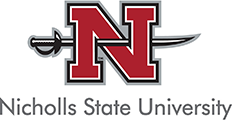What Is a Full-Stack Engineer? was originally published on Forage.

Full-stack engineers are the renaissance people of software engineering. They do it all, from working with clients to understand their vision of software, to developing on the back end, to testing and releasing the software. So if you’re interested in being a software engineer who works on a broad spectrum of tasks and types of work, becoming a full-stack engineer might be right for you.
So what is a full-stack engineer, what do they do, and how do you become one? In this guide, we’ll cover:
- Definition of Full-Stack Engineer
- What Does a Full-Stack Engineer Do?
- Full-Stack Engineer Salary
- How to Become a Full-Stack Engineer
Find your career fit
Discover if this is the right career path for you with a free virtual work experience.
Definition of Full-Stack Engineer
A full-stack engineer is a type of software engineer who works on both the front and back end of software. This means they’re concerned with both what users see (the front end) and the parts of the software that make that user-side view possible (the back end).
“Full-stack developers are crucial players in building amazing software applications,” says Dario Zadro, owner and web developer of Zadro Web and full-stack developer with over 20 years of experience. “They have expertise in a wide range of technologies and can work on the design and functionality of a website or app.”
Full-Stack Engineer vs. Other Types of Engineers
In Stack Overflow’s 2022 Developer Study, nearly 47% of respondents identified themselves as full-stack engineers, the most popular position in the study, followed by back-end (about 43%) and front-end (about 25%) engineers. Before the internet was invented, every software engineer was full-stack, according to Tech Crunch. However, as technology developed and become more complex, there was a need for more specialization — and more software engineers began to narrow in on specific parts of the software development process.
“I’ve heard this often described as breadth vs. depth of skills,” Kathy Zhou, CTO and technical co-founder of Queenly, a search engine for formalwear, says. “Domain-specific engineers have the depth of knowledge to understand a specific programming language or framework at a more granular level of architectural or field-specific knowledge. A full-stack engineer is often described as a ‘generalist’ and can dive into newer tech stacks, but might not have the years and years of experience working deep in one specific tech stack.”
>>MORE: Types of Software Engineers (and How to Know Which One’s Right for You)
A full-stack engineer is focused on the entire software development process and is skilled across different software parts. However, this means they’re not often a master of one part of the software, like a front-end engineer is with the user side or a security engineer is with the software’s cybersecurity solutions.
What Does a Full-Stack Engineer Do?
A full-stack engineer’s job is to work on both the front and back ends of software and how those parts communicate. Some of their everyday tasks might include:
- Collaborating internally with both front-end and back-end engineers to improve efficiency and identify roadblocks
- Collaborating externally with the product or design team
- Writing tests for the code to ensure it’s working as intended
- Finding and fixing bugs in the code
- Implementing new software features
- Designing software architecture for the back end
- Building front-end applications to align with client specifications
- Writing documentation of the software development process
A Typical Full-Stack Engineer Day
Rostislav Roznoshchik, a full-stack engineer at Coursello, shares that his typical day starts with collaboration at a fully remote job.
“We use Jira for project management, so most days, I will take a look at what’s on my to-do list and get to work,” he says. “I work at a fully remote company, so most of our communication happens in Slack. Every morning we also get on a Zoom call with the engineering team to have our daily standup.”
After Roznoshchik has met with the team, he gets started on his technical tasks.
“My day is usually spent reading documentation and looking through demos online for how to accomplish certain things,” he says. “We work a lot with AWS and that’s never easy to wrap my head around. As a full-stack developer, most of the stuff I work with touches web services, so I’m often writing REST APIs for the backend. I’m building some web apps for our customers as well, and those are use a framework called Preact, which is a super small version of the popular framework React. A lot of the coding is also writing unit tests to make sure that my code works in all the ways I expect.”
>>MORE: Develop your knowledge of REST APIs with Telstra’s Software Engineering Virtual Experience Program.
If he’s not writing code for his projects, Roznoshchik says he does code reviews for his colleagues. “This means I’m reading through it, offering an extra pair of eyes to catch bugs.”
Typical Day as a Full-Stack Technical Lead
As CTO of Queenly, Zhou says her role is similar to being a corporate company’s full-stack technical lead. She splits her days between coding, people management, and project management.
- Coding: “I try to pick up the work of ‘everything else’ that pops up across our tech stack,” Zhou says. “This has included building a quick internal tool to help our customer success team, doing ‘grunt work’ of cleaning up my past technical debt, or building out a sudden feature request for a new partnership.”
- People management: Because she’s a manager, Zhou holds 1:1 meetings with all engineers to review their career goals, give feedback, and help them with roadblocks on business decisions for their projects. She also likes to spend time pair programming. “I’ve been fortunate to have worked on iOS, web, API and data pipeline tech stacks prior to becoming CTO, so I take time to personally mentor engineers on picking up new technical skills,” she says.
- Project management: As a CTO, it’s up to Zhou to decide what projects the team prioritizes. “My role is to balance considerations for projects that impact metrics with consideration to technical debt, architectural decisions, and working with our engineers to determine reasonable timelines and iterations,” she says.
For Jessica Gallagher, full-stack engineer and founder and CTO at Tech Meowt, a typical day consists of personal development and coding — and working through code issues as they arise.
- Personal development: Gallagher says she starts her day with an hour of professional development. “Software engineering is always changing — which means I’m always learning,” she says.
- Coding: “At the beginning of each project, I set a timeframe to finish the entire software program, and I also set timeframes to reach certain milestones in the project,” Gallagher says. “I spend most of my day working towards that. I put on a good playlist, grab some coffee, and I start writing code for the software.”
- Debugging code: Gallagher works proactively and retroactively to ensure her code works as intended. She spends a lot of time researching the code she’s writing so it doesn’t break. If it does, she takes time to debug it and make it work again.
Because this type of work is so computer-focused, Gallagher has to ensure she doesn’t spend hours sitting in front of a screen.
“I take breaks every hour, and I make sure to really step away from my laptop and do something relaxing,” she says. “Before I end my day, I write down what I’ve accomplished and any useful information that would help me the next day — like a question or idea.”
Full-Stack Engineer Salary
Software engineering — which includes full-stack engineering — is typically a high-paying career path.
According to the U.S. Bureau of Labor Statistics (BLS), the average salary for software developers (which includes software engineers) is $120,990 as of May 2021. The growth rate for this career path is 25% from 2021 to 2031, much higher than the average growth rate for all jobs of 5%.
Although the BLS doesn’t provide unique salary or job growth information for full-stack engineers, Glassdoor lists the average salary at about $122,000. Entry-level full-stack engineers with fewer than two years of experience average around $96,000 a year, while senior full-stack engineers average about $200,000 a year.
How to Become a Full-Stack Engineer
According to Stack Overflow’s study, nearly 80% of software engineers have a bachelor’s degree or higher. Learning your full-stack skills from a traditional college or university program is still a popular avenue for entering this career path; however, it’s not the only way to become a full-stack engineer.
Instead, your skills are what’s most important when it comes to landing a job in this career path. Bootcamps, online courses, virtual experience programs, and even self-teaching are all ways to gain the skills you need. In addition, with the rise of new collar jobs — jobs that focus on skills rather than degree requirements — there are more opportunities to land a career in the tech industry without a traditional education.
What Skills Does a Full-Stack Engineer Need?
If skills are the best way to land a full-stack engineer role, which ones do you need?
Hard Skills
Let’s start with the hard skills. Because full-stack engineers work on both front-end and back-end engineering, you’ll need the skills from both sides of the software and knowledge that helps you understand how parts of the software communicate. Top skills for full-stack engineers include:
- Front-end programming languages like HTML, CSS, and JavaScript
- Back-end programming languages like Python, SQL, and PHP
- Website architecture: planning and designing the site’s structure
- Version control: systems used to track changes in code
- APIs: mechanisms that help two parts of the software communicate
>>MORE: Practice your programming skills with Accenture’s Know the Code Virtual Experience Program.
Soft Skills
However, you need more than hard skills to be a successful full-stack engineer. You’ll need soft skills like patience and persistence to work through difficulties in your code.
“Code rarely works on the first try, so you have to be okay with that and not give up,” Gallagher says. “Attention to detail is very important as well, since something even as small as a missing semi-colon could break your program! You should also be very curious and a lifetime learner.”
Outside of your coding work, this type of software engineering requires collaboration with other engineers and the product and design teams. As you move up in the career path, you’ll also need leadership skills to mentor newer engineers.
>>MORE: Guide to the Software Engineer Career Path
“It’s not only important to successfully learn different technical stacks yourself, but also to be able to mentor and train other engineers on those technical skills,” Zhou says. “Aside from the usual skills of being able to read documentation for new frameworks/SDKs, jump into a new programming language, or debug issues in an area of the codebase you’re unfamiliar with, the most important skill is to be able to train someone else to think and operate at that level too. My opinion is building empathy and effective communication skills as an engineer goes hand-in-hand with technical skills to be a successful full-stack engineer.”
Practice your software engineering skills with Forage tech virtual experience programs.
Image credit: Christina Morillo / Pexels
The post What Is a Full-Stack Engineer? appeared first on Forage.




